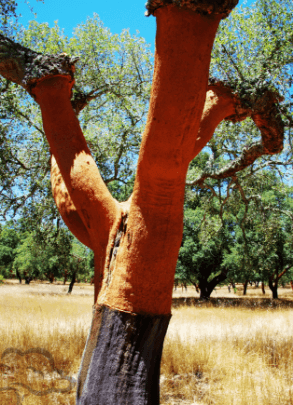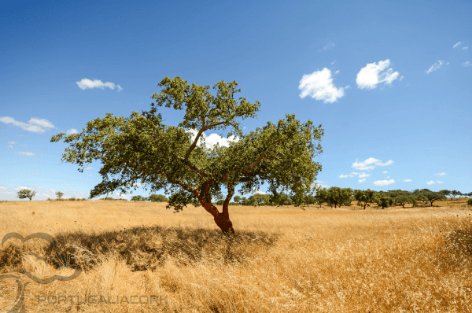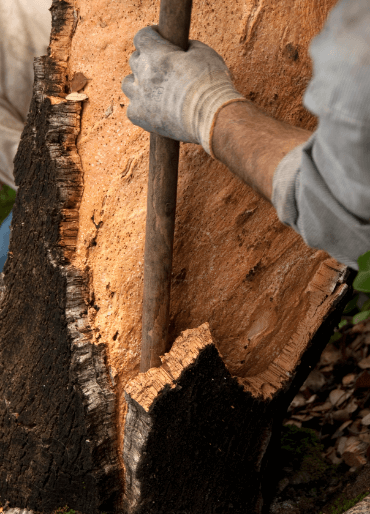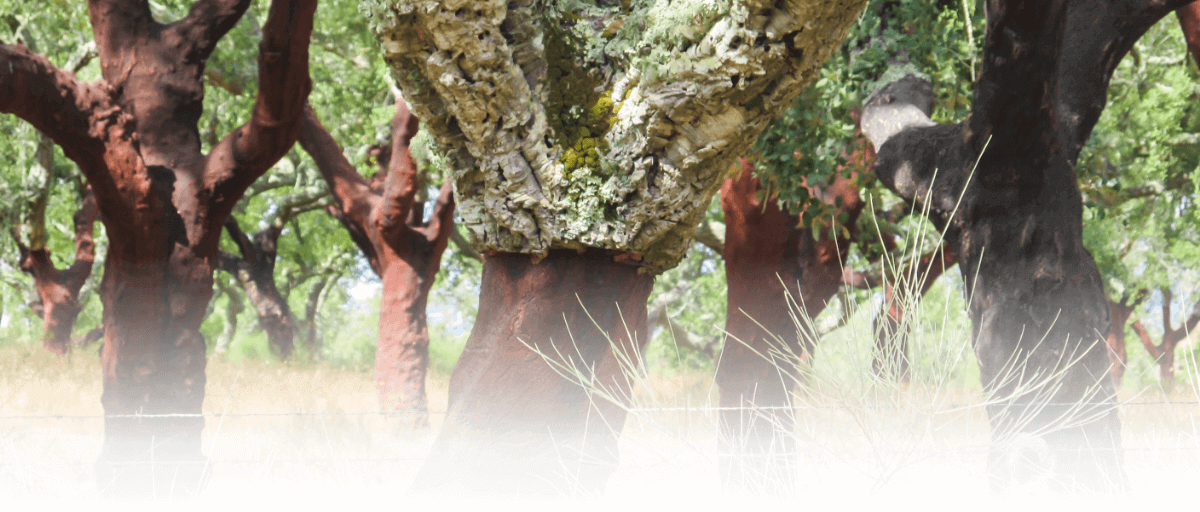Cork leather is one of many products made from the bark of Cork Oaks. These remarkable trees grow naturally in the Mediterranean region of Europe as they have for millennia; an area that produces 80% of the world’s cork. Once to cork is ready for harvest, the cork is hand cut from the tree in planks, dried for six months, boiled in water to sterilize the planks, and then flattened and pressed into blocks. These clocks are precisely cut into extremely thin sheets which form the basis for cork leather. A fabric backing is then pressed on the cork sheet, which is bonded by suberin, a naturally occurring adhesive present in the cork. The resulting material is flexible, soft and strong and is the most environmentally friendly, and natural, ‘vegan leather’ on the market.
Finished cork leather has a smooth, relatively matte, finish, an appearance that improves over time much like leather. It is water-resistant, flame resistant, and hypoallergenic. Fifty percent of the volume of cork is air and consequently, products made from cork leather are lighter than their leather counterparts. The honeycomb cell structure of cork makes it an excellent insulator: thermally, electrically and acoustically. The high friction coefficient of cork means that it is durable in situations where there is regular rubbing and abrasion, such as the treatment we give our purses and wallets and, certainly, our furniture. For upholstery applications, a finish is applied that raises the durability, water, stain and scratch resistance even beyond what cork has naturally. The elasticity of cork guarantees that a cork leather article will retain its shape and because it does not allow the penetration of dust, it will remain clean.



It takes approximately 5 decades to grow a mature cork oak tree that has high quality bark. Then, depending on climate conditions, the tree can be stripped every 7-10 years. It is important to highlight that cork bark harvesting causes no harm to the tree and is actually a beneficial process. A stripped cork tree absorbs, on average, five times more CO2. The cork bark obtained from the trees is dried, disinfected and used to produce cork blocks.
To obtain soft and flexible yet durable cork fabric, extremely thin layers are sliced from blocks and used to create high quality textiles.Cork fabric is made mostly with natural origin materials. It does not contain any heavy metals, organic solvents, mineral fibres or formaldehyde. In order to achieve higher product characteristics additional synthetic materials are applied, yet none of them could cause harm to the environment or health.
It takes 5 decades to obtain high quality cork from the tree
Harvesting is done every 7-10 years.
The cork bark is then dried, disinfected, and use to produce cork blocks
Blocks are sliced into extremely thin layers.
Cork layers are used to create high quality textiles.
Cork is the outer bark of an evergreen oak of the genus and species Quercus Suber (oak cork). Forests of oak cork trees are carefully monitored and cultivated, and act as a renewable source for this remarkable material.
During a harvest, the outer bark of a cork oak’s trunk and major branches is carefully stripped by hand – no mechanical stripping devices are allowed. Experienced cork strippers use a specialized cork axe to slit the outer bark and peel it away from the tree. A cork tree regenerates its precious outer layer 12 or 13 times during its 150-year lifetime. The first stripping of the cork bark occurs when the tree is between 15 and 20 years of age, with subsequent yields at 9 to 10 year intervals.




Due to its climate, Portugal is home to the best cork worldwide All our cork leather is made with sustainably produced cork of 100% Portuguese origin.

Cork leather is made from the bark of Cork Oaks. Cork Oaks grow naturally in the Mediterranean region of Europe, which produces 80% of the world’s cork. The cork is hand cut from the tree in planks, dried for six months, boiled in water.
Cork leather has a smooth, relatively matte finish, an appearance which improves over time. It is water resistant, flame resistant and hypoallergenic. Fifty per cent of the volume of cork is air and consequently products made from cork leather are lighter than their leather counterparts.